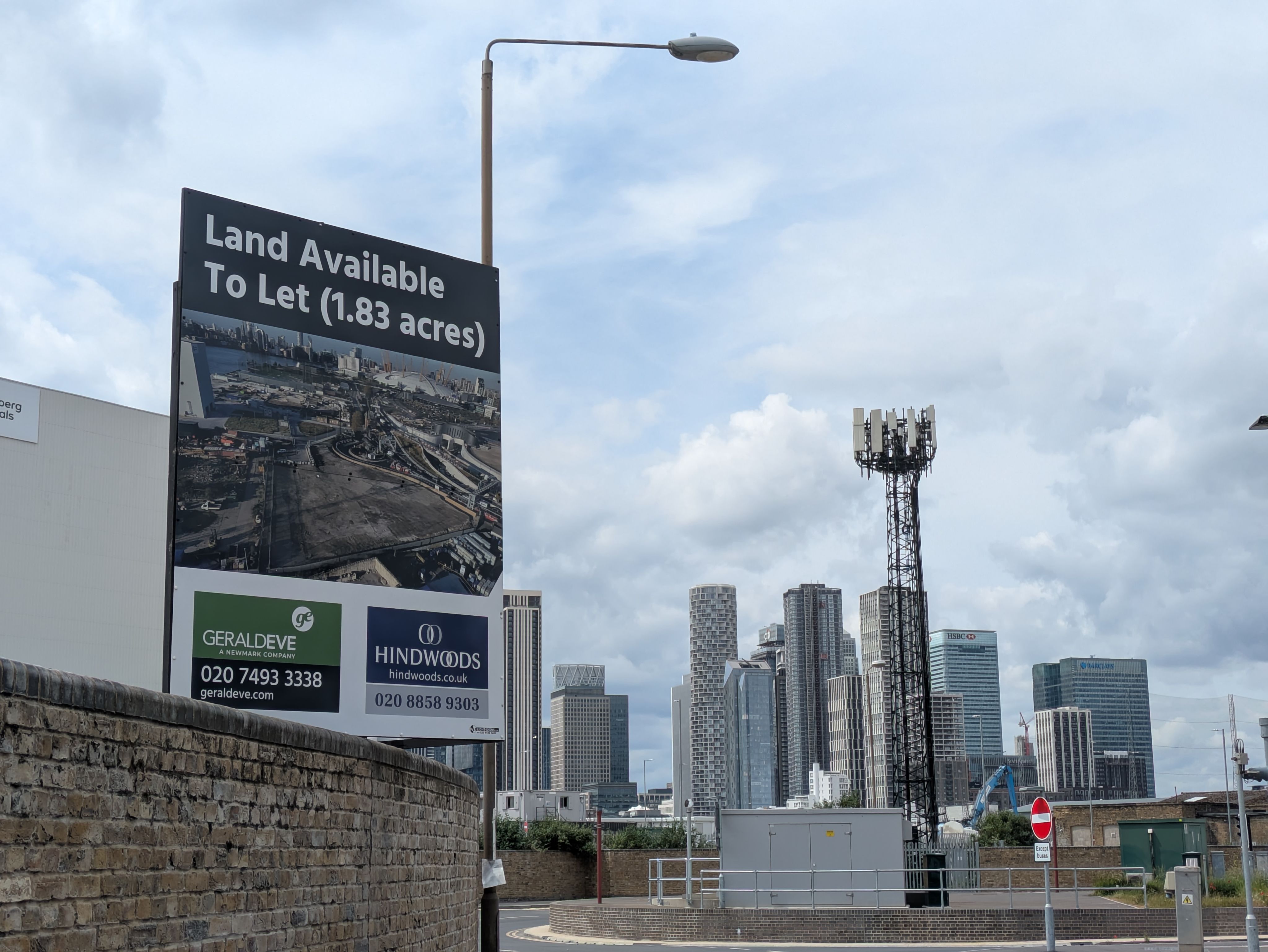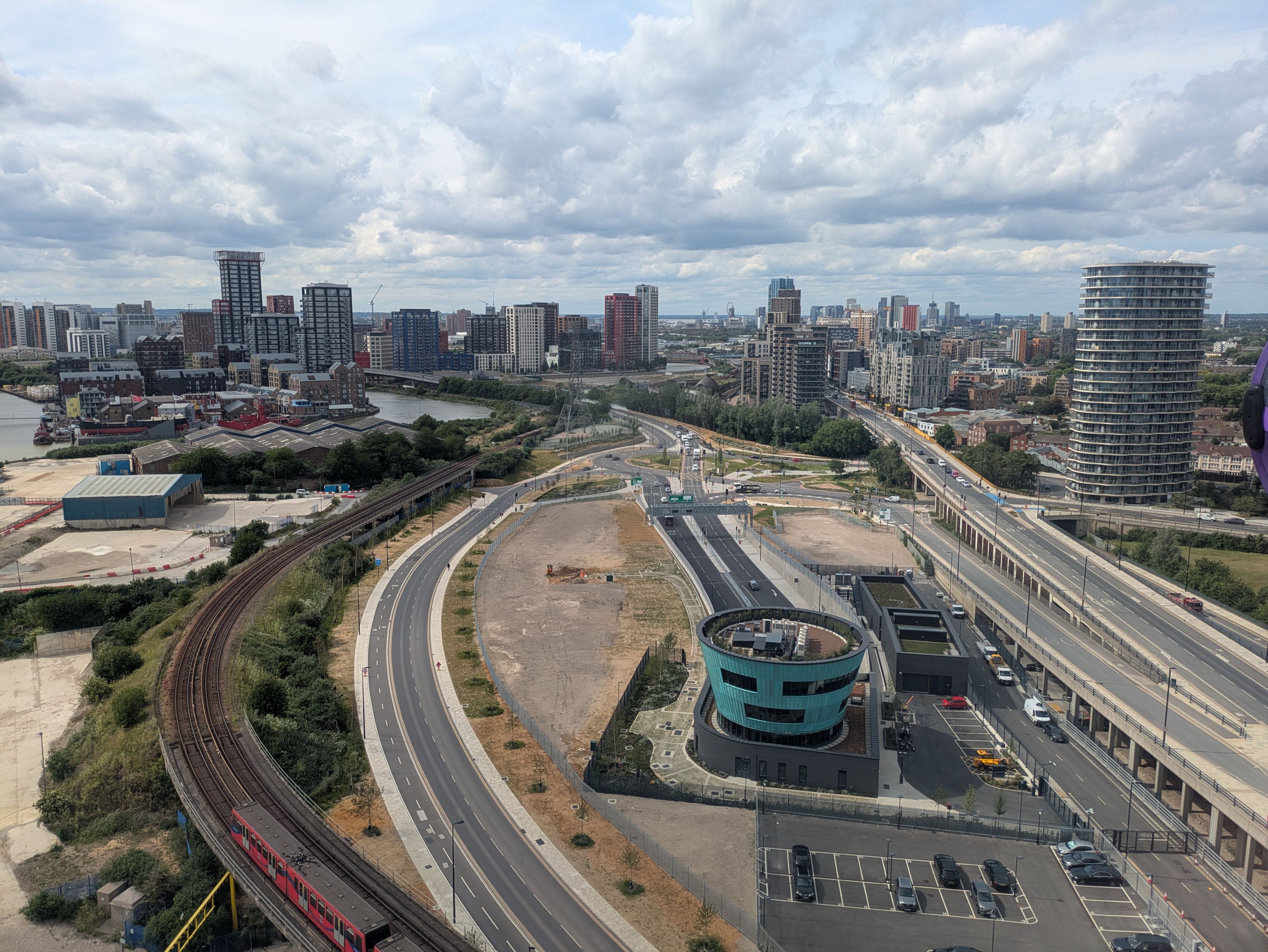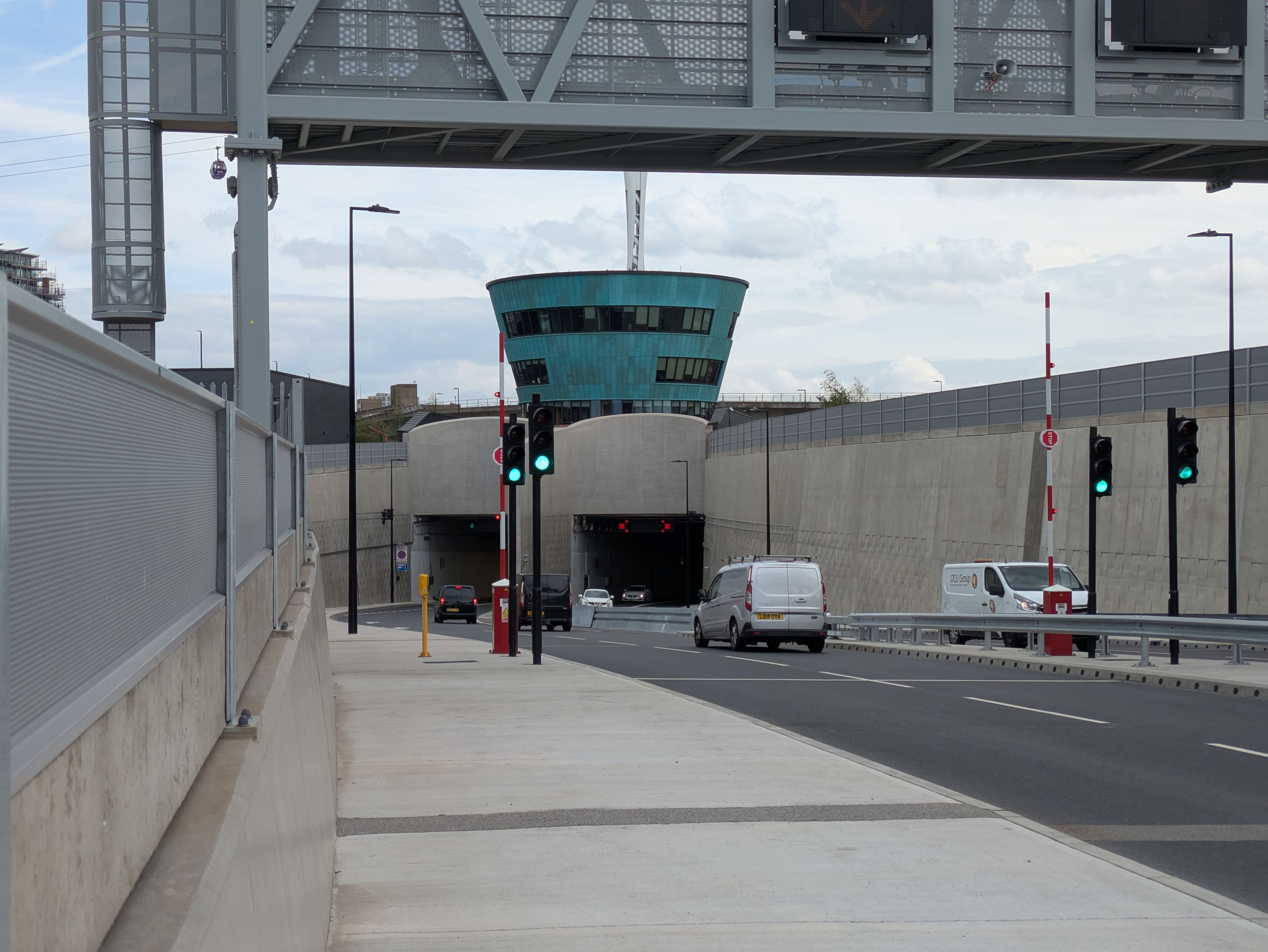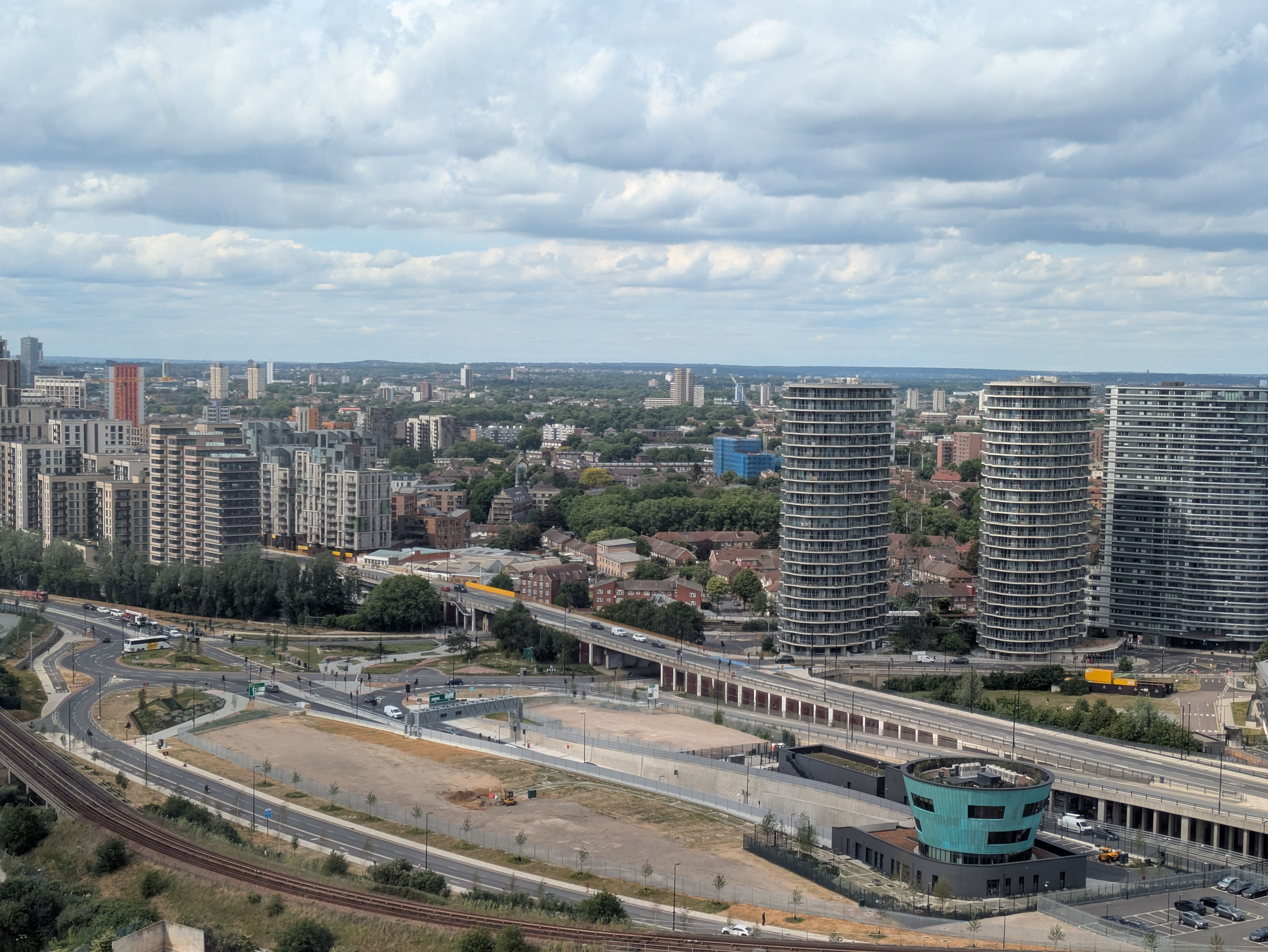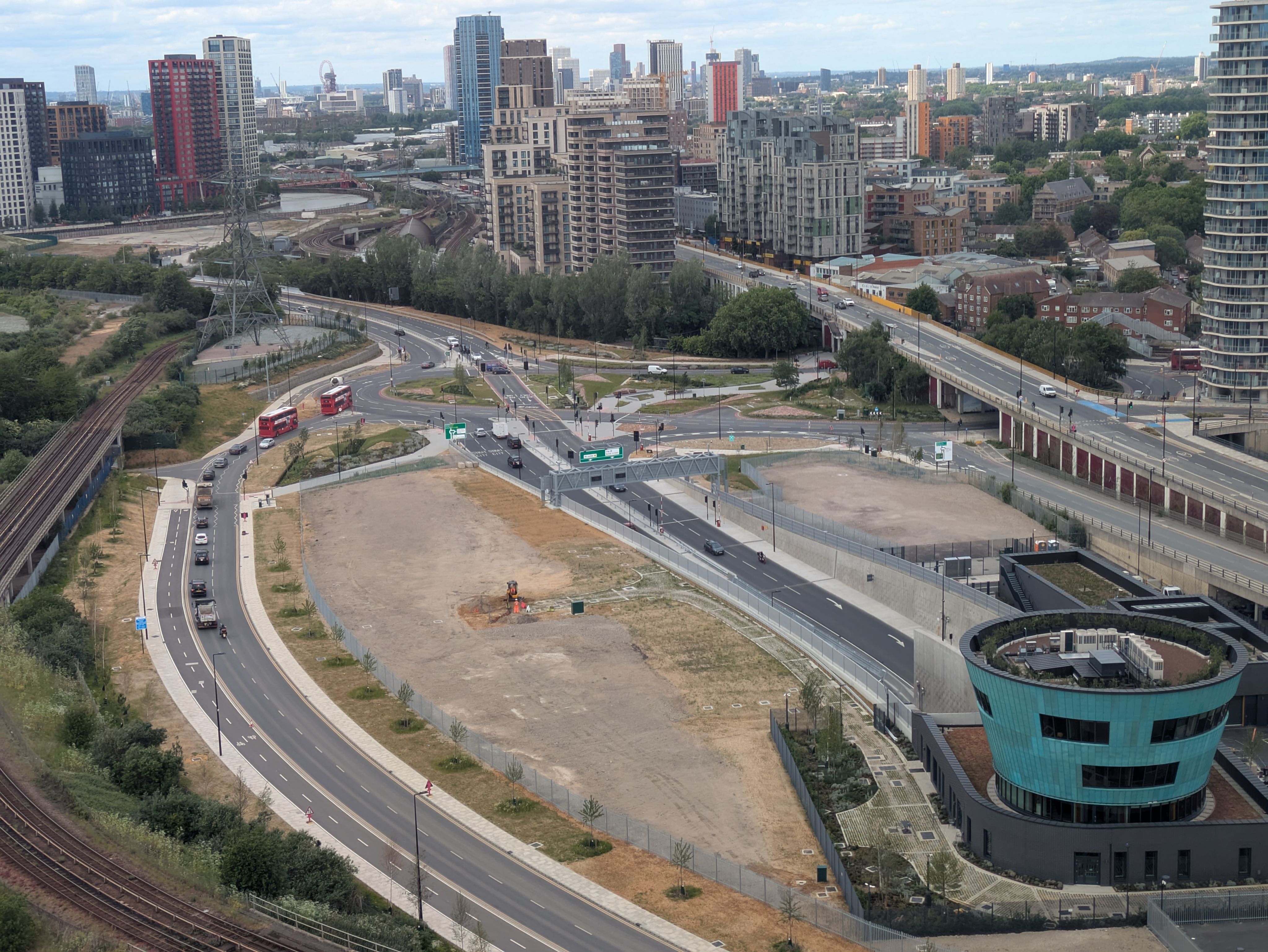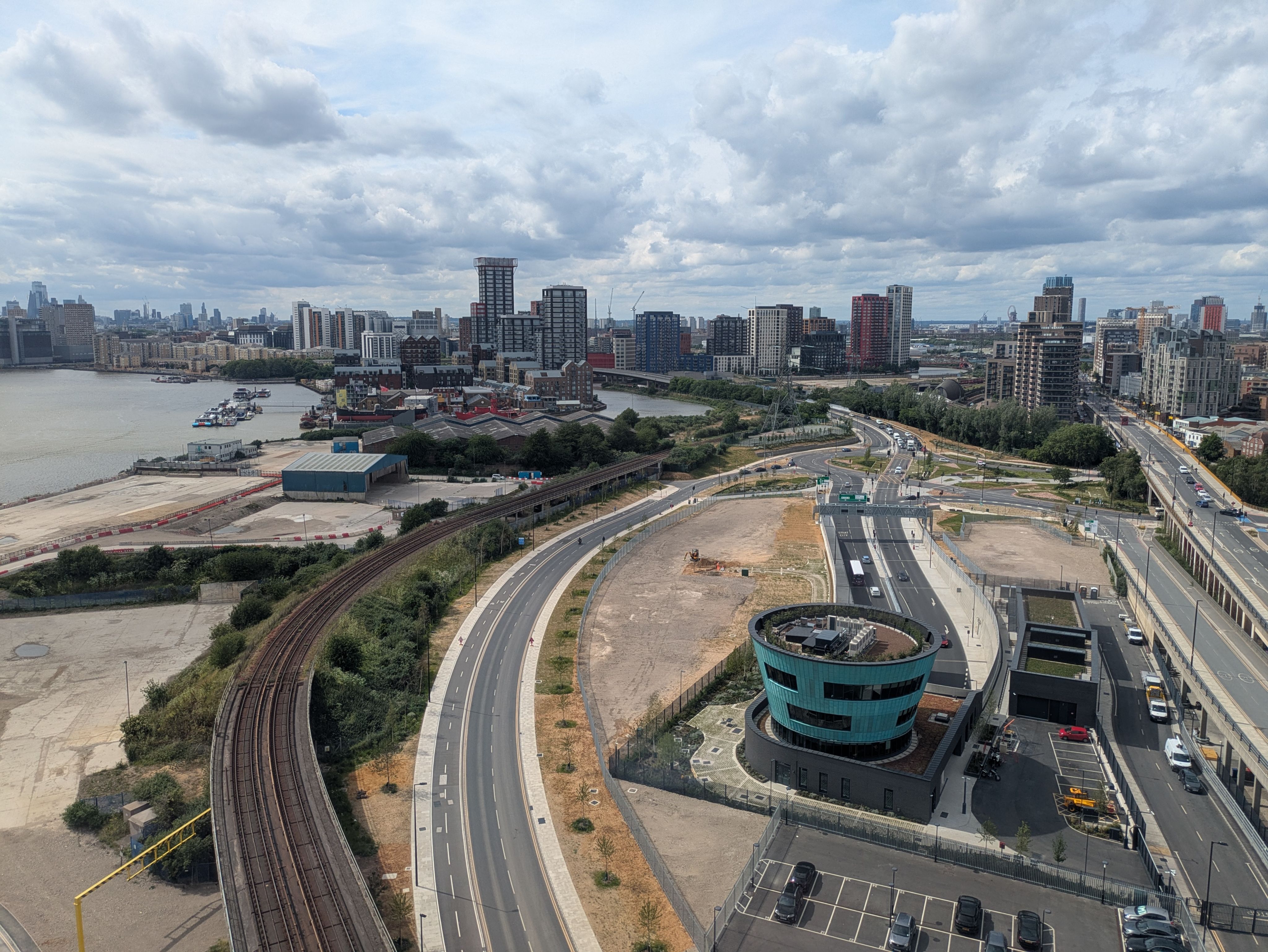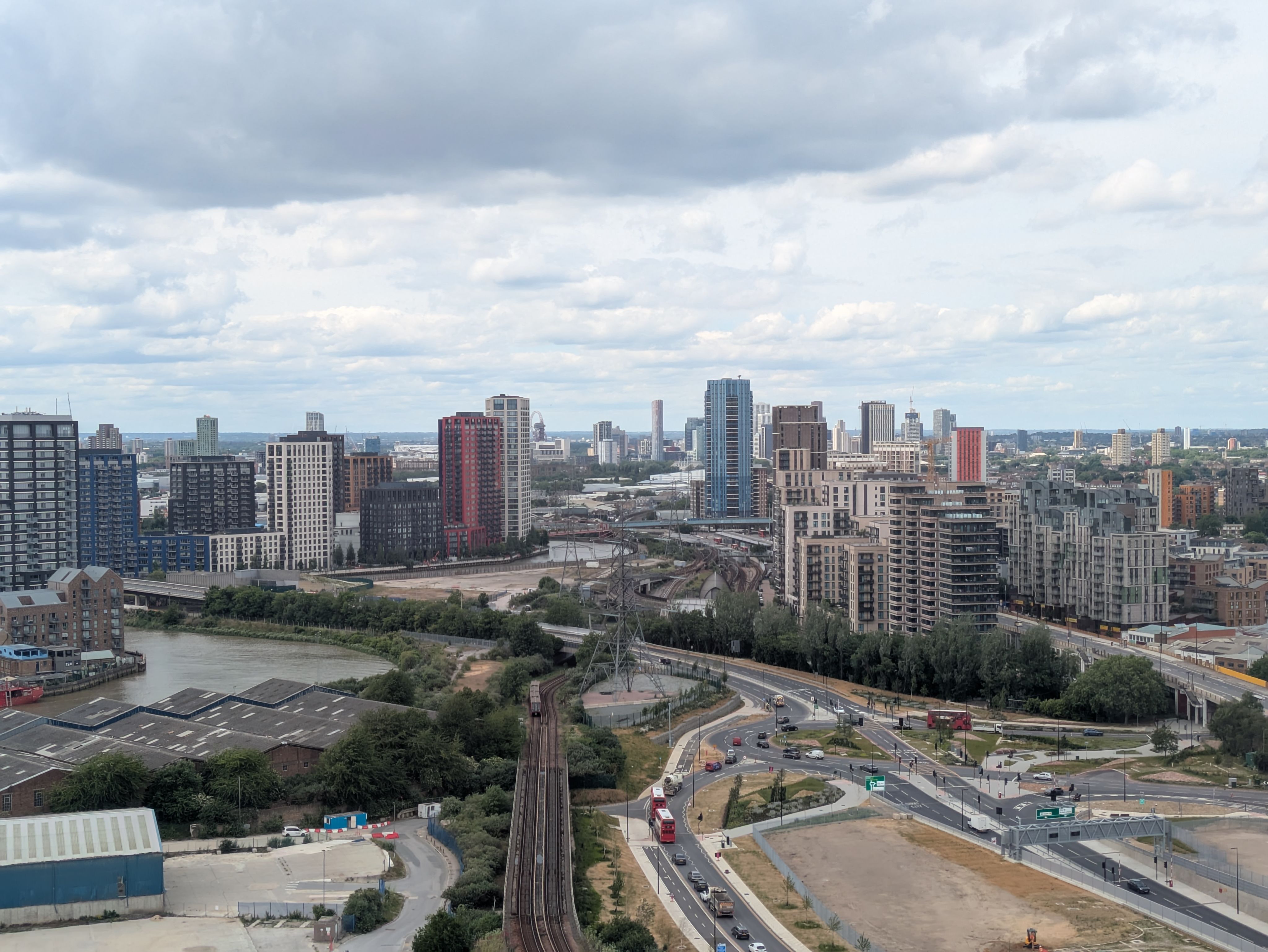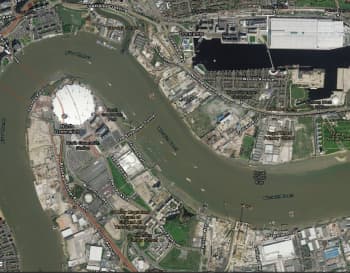Silvertown Tunnel: Growth against climate?

"Breathe” by London Mayor, Sadiq Khan, is a book at odds with the current state of development in the capital, according to Stop Silvertown Tunnel campaigner Karin Teale. She’s attended all the Riverlinx Consortium and Transport for London (TFL) implementation meetings to scurtinse air quality monitoring throughout Silvertown tunnel’s construction.
Silvertown tunnel opened on the 7th of April after five years of construction, providing a road transport link between Greenwich penninsula and Newham, one of the few crossings in East London.
A TFL spokesperson said: "The scheme has been demonstrated to be the best solution to the well-known problems at Blackwall Tunnel by addressing the serious congestion on the approaches to the crossing, resolving the significant issues with poor reliability, and enabling a step-change in cross-river bus connectivity which will support growth in the wider area around the tunnels"
Since the tunnel opened campaigners have been clear that they believe the real reason for Silvertown Tunnel’s development was for the sake of HGVs rather than convenience for the average commuter, or reducing congestion on the other two Blackwall tunnel sites as TFL originally cited.
Karin Teale writes: “Despite Sadiq Khan’s best intentions, he has failed people in East and South East London. He has built a tunnel big enough to take much bigger and heavier HGVs which also emit PM2.5 dust particles from tyres and breakpads.”
PM2.5 levels are a key indicator of air quality, and exposure to it is known to cause a number of health issues. When somebody smokes a cigeratte for example, there are extremely high PM2.5 levels in the smoke inhaled.
Teale has been involved with Breathe London, a charity that focuses on tracking London’s air quality, she’s been helping them chase up the case of their two deactivated monitors.
In December of last year, Breathe London’s air quality monitoring around the Silvertown tunnel site, at St. Mary Magdalene CE School, and the Silvertown Tunnel acess corridor were switched off after Greater London Authority (GLA) funding ran out. Since then, the London Borough of Newham resumed funding for the access corridor monitor, which began recording data again on the third of April.
Currently, the only monitor active near the Greenwich pennisula (one of Silvertown tunnel’s access corridors) is at John Harrison Way - which began recording data on the 13th of May, this year.
London for sale: a plot perfect for HGVs being advertised by the South Silvertown Tunnel access corridor.
London for sale: a plot perfect for HGVs being advertised by the South Silvertown Tunnel access corridor.
The North Silvertown entrance corridor from above.
The North Silvertown entrance corridor from above.
Mouth of the beast: The North access corridor from the ground.
Mouth of the beast: The North access corridor from the ground.
In response to campaigner's concerns about increased HGV traffic, a TFL spokesperson said: "TfL is closely monitoring the impacts of the scheme and, if necessary, will introduce additional measures, such as adjusting the user charge for HGVs, to ensure the forecast benefits are being achieved."
Annually, PM2.5 levels have spiked in 2025 according to Breathe London reports, although we’re yet to see definitive evidence for the worsening of air quality as the tunnel is yet to be used to its full capacity, according to Simon Pirani, another member of Stop Silvertown Tunnel, he’s a researcher, published author and lecturer, he believes it’s only a matter of time until the tunnel fills up.
Pirani said: “So, although it’s pretty empty now, one scenario is that it will just fill up with cars.
“That’s what happened with the Dartford crossing, that’s what happened with the M5 Motorway. There’s a lot of previous examples.” He added.
Pirani tells me that tolls are a key factor to this, he points to the current backlash against TFL due to the autopay system and expensive tolls, but rebukes TFL’s claim that the level of traffic is elastic to the price of tolls, citing there will be a proportion of people who aren’t bothered, but building road infrastructure in the first place is a poor choice.
Pirani said: “If you build roads, people get in their cars and drive on them. If you don’t build them, they’ll find another way to get where they’re going, and that’s why you shouldn’t build them.”
Pirani points to other projects, like the lower Thames crossing, which aims to be a six lane motorway connecting Kent and Essex, he believes there’s a worrying trend in contractors being reluctant to undertake large crossrail projects amid political uncertainty paired with the fact that they’re more complicated and difficult to construct and implement.
Pirani said: “It’s all about the relationship between national government and local government, which should be better, because they’re both labour party.”
He points to the story of Newham and Greenwich coucils' opposition to the Silvertown project, in which Greenwich took several years to join.
Pirani said: “They passed a motion saying we are against the Silvertown Tunnel which was a bit of a joke because if they’d said it two or three years earlier I actually do think Sadiq Khan would’ve had a real problem.”
The Stop Silvertown Tunnel coalition fought for years, with a group of environmentalists initally stating their opposition in 2013 when plans were first announced, the following 12 years have been marred with frustration at the slow processes of local borough councils and the GLA.
North silvertown tunnel access corridor
North silvertown tunnel access corridor
North Silvertown access corridor
North Silvertown access corridor
North Silvertown Tunnel access corridor
North Silvertown Tunnel access corridor
Canning Town in the distance.
Canning Town in the distance.
The Stop Silvertown Tunnel timeline:
2012-2013
”No to Silvertown Tunnel” started operating in 2012-2013 as plans for the site were originally laid out.
Pirani said: “They were a small and very dedicated bunch of environmentalissts who argued that London should not have new road infrastructure at this stage of the game, it didn’t need it, it needed better public transport and active travel infrastructure.”
2016-2017
There was an environmental impact planning assessment for the Development Consent Order published in 2016.
On the topic of the Silvertown Tunnel and PM2.5 levels, a TFL spokesperson said: “Both the Silvertown and Blackwall tunnels lie within the Ultra Low Emission Zone which is reducing vehicular pollution across London. TfL is committed to delivering an overall improvement in air quality due to reduced traffic delays and congestion as a result of this scheme and began a comprehensive programme of Silvertown specific NO2monitoring in 2020 to understand baseline conditions.”
Development Consent Order (DCO) issued in early 2018 coming from central government.
2019
“Stop Silvertown Tunnel Coalition” formally started in 2019, with events from “Speak out Woolwich” assisting their cause.
They organized lobbies at City Hall, aiming to have large, energetic demonstrations to raise awareness.
By the end of 2019, several councils including Newham, Lewisham and Hackney stated their opposition to the tunnel. The GLA took the final investment decision at the end of 2019 to build the tunnel.
2020-2021
Survey on local residents by Stop Silvertown asking them what they’d like to see money spent on, the results were overly in their favour in terms of spending money on public footpaths and cycle paths against building road infrastructure.
2022
Pirani said: “The last ditch battle was in May 2022, there were council eelctions, prior to that we really put the heat on the Greenwich council where we said, the elections are coming up, you’ve got to go one way or the other.
“March or April 2022, they passed a motion saying we are against the Silvertown Tunnel.” He added.
However it was too late as construction was already starting.
2023+
Stop Silvertown Tunnel mainly exists as a skeleton crew responding to journalists, and still advocating for different uses of the tunnel, nowadays, most campaigners have moved on to different things, in the case of Simon Pirani, he’s been involved with aid in ukraine.
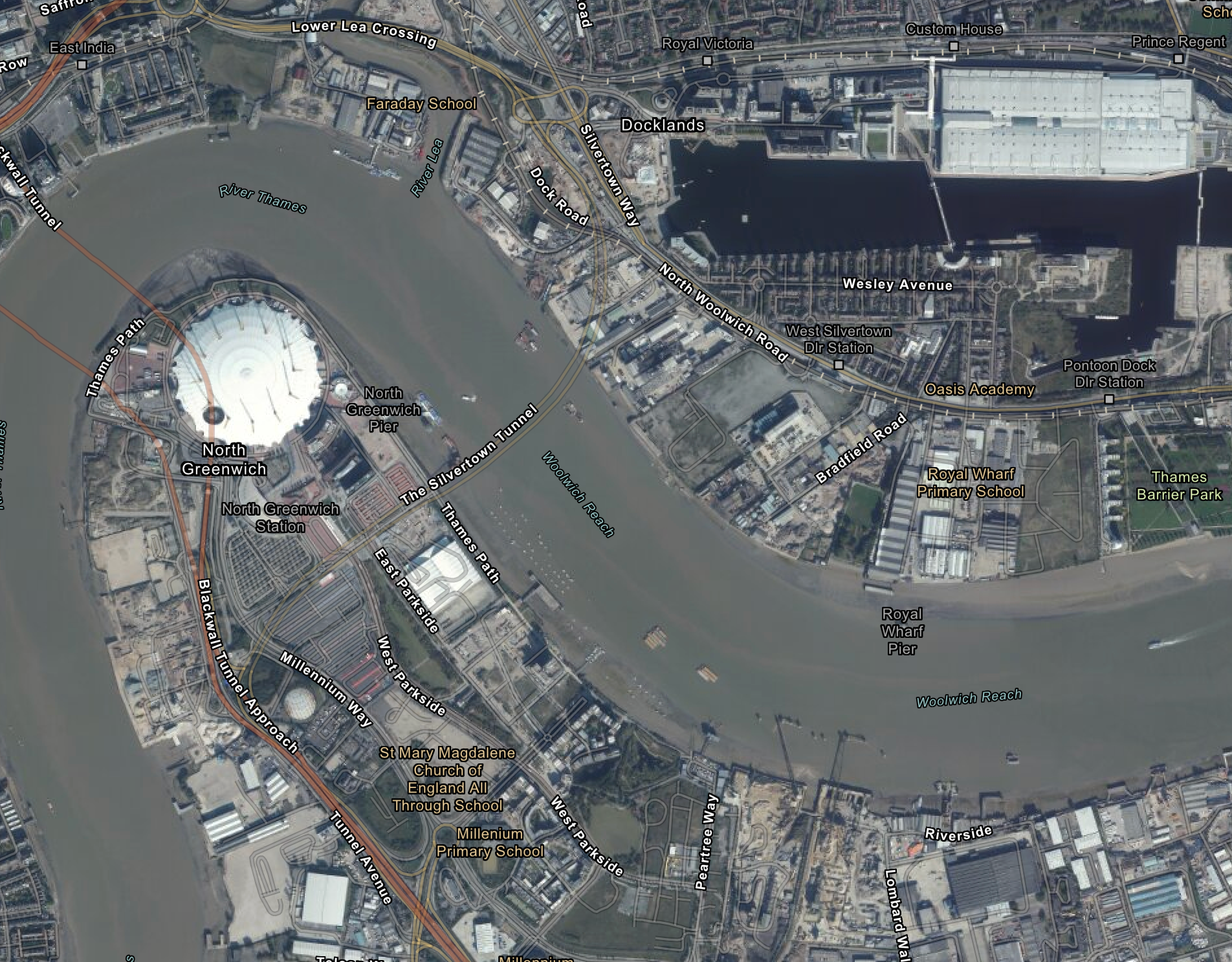
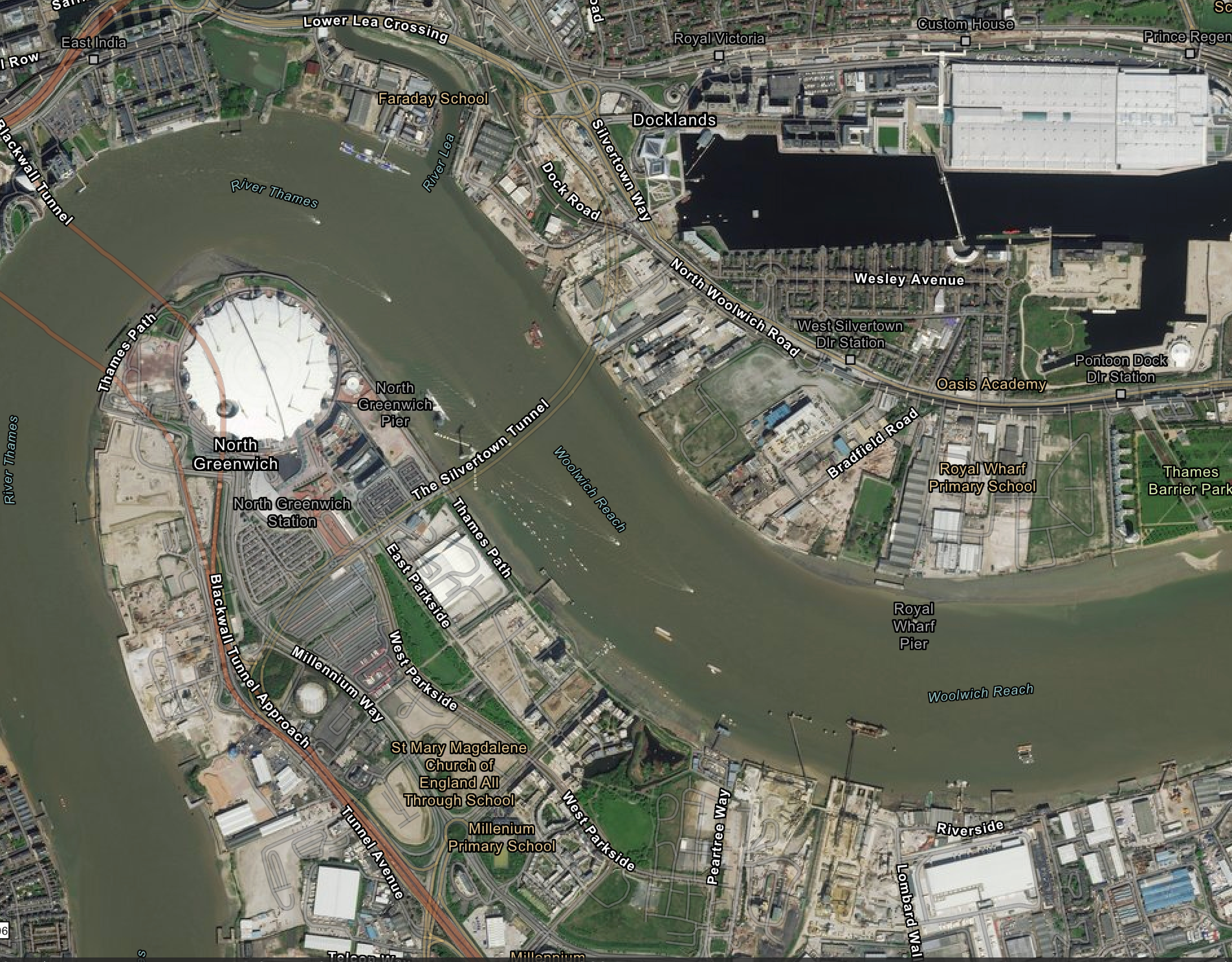
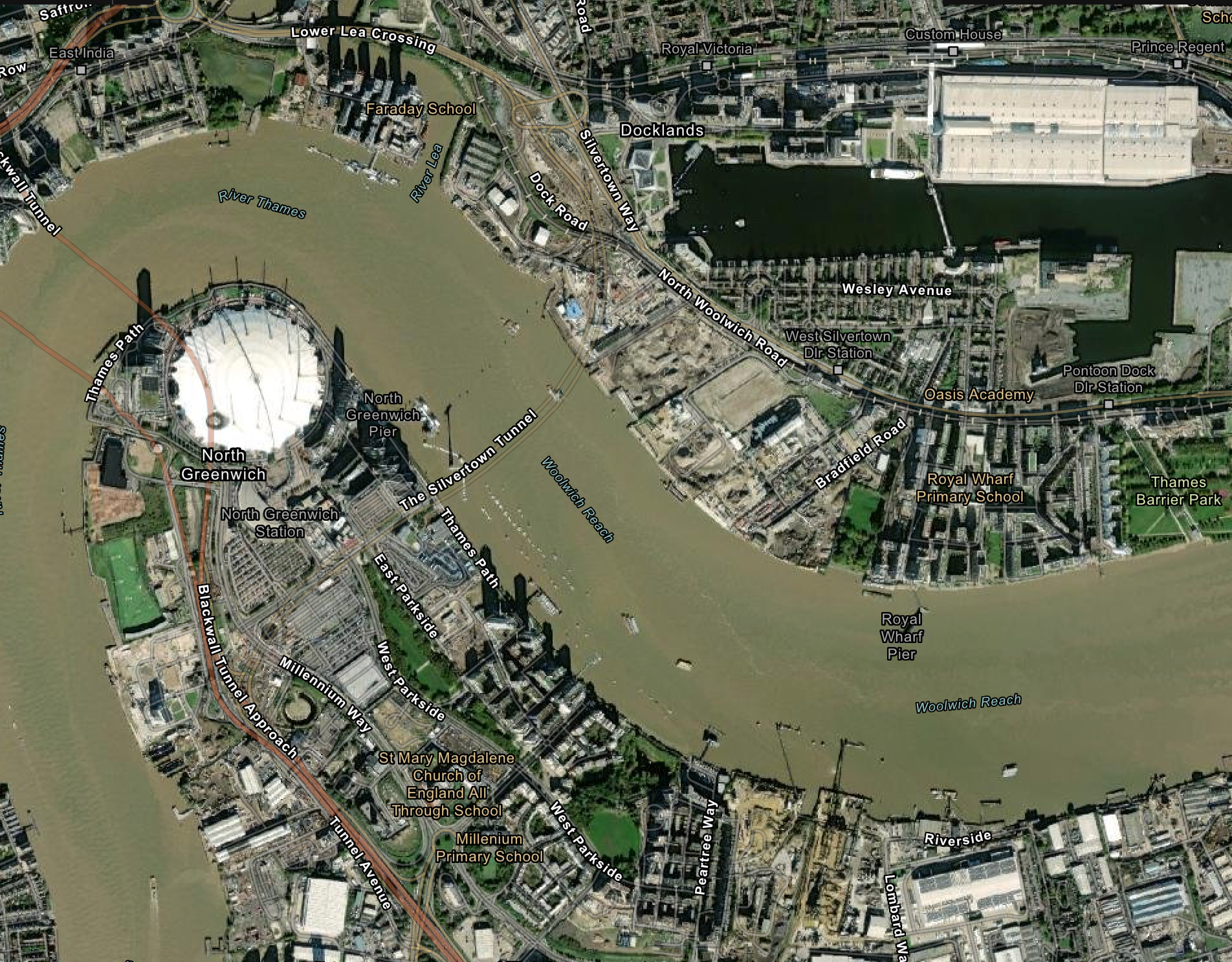
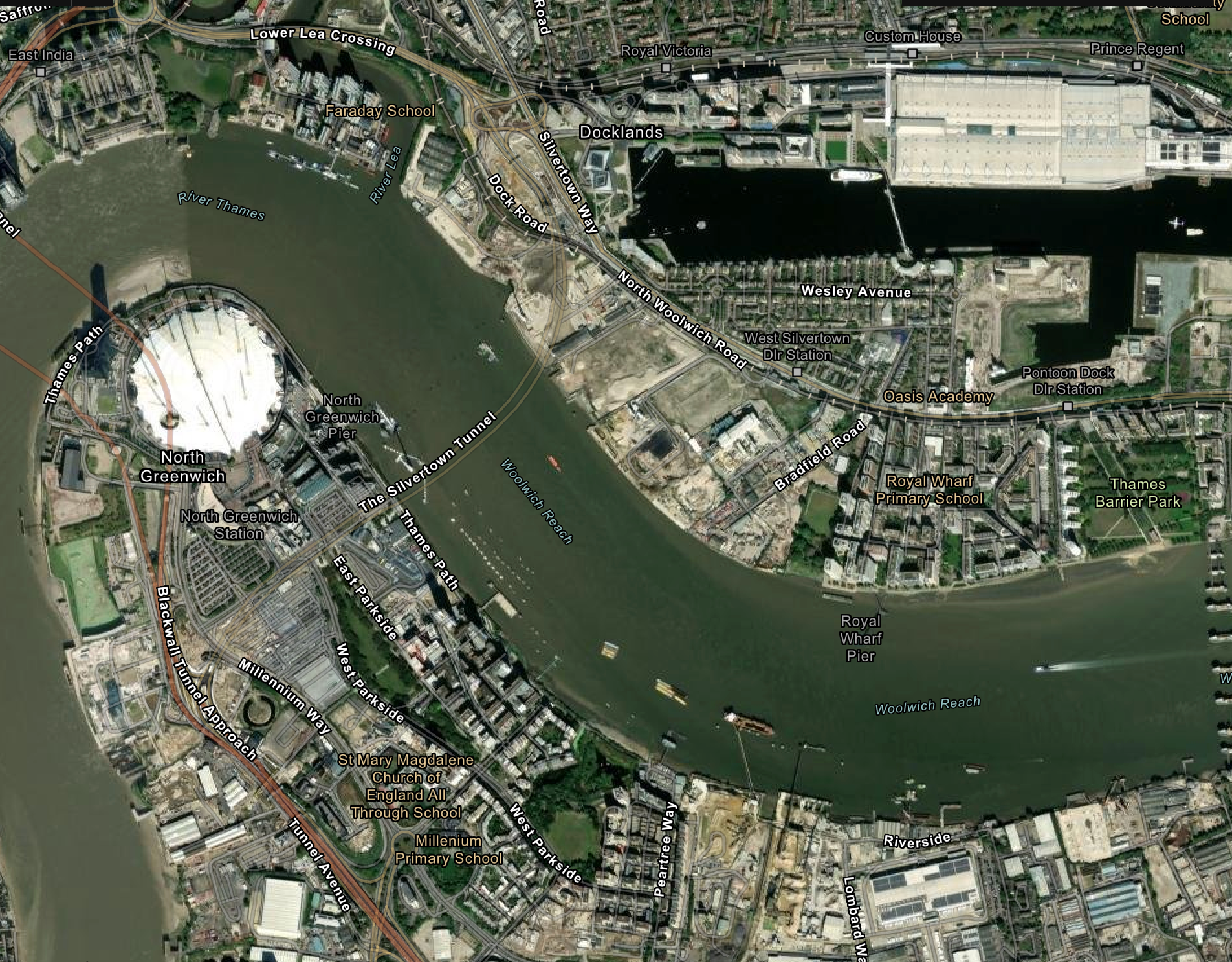
Have your say; what do you think about the Silvertown Tunnel?

